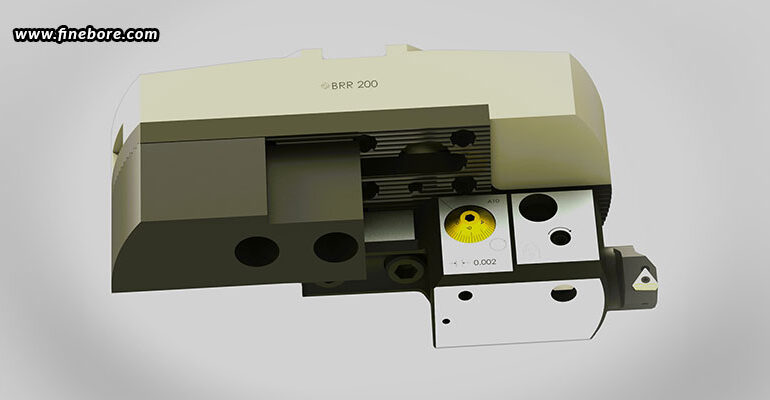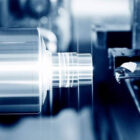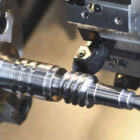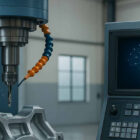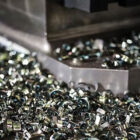When it comes to precision machining, the tools used are only as effective as the way they are held and supported. Boring bars are essential for enlarging and finishing holes to tight tolerances, but the performance of these tools is heavily influenced by the type of tool holder selected. This blog explores the importance of selecting the right tool holder for your boring bar, examines various types of tool holders, and discusses how they affect machining accuracy and stability.
The role of tool holders in machining
Tool holders serve as the interface between the machine tool and the cutting tool, providing stability and precision during the machining process. They are designed to securely grip the tool while minimizing vibrations and deflections, which can significantly impact the quality of the final product. When it comes to boring operations, where precision is paramount, the right tool holder is crucial to achieving optimal results.
Types of tool holders for boring bars
There are several types of tool holders available for boring bars, each with its own advantages and applications. Understanding these options is essential for selecting the most suitable holder for your specific needs.
- Collet chucks: Collet chucks are highly valued for their accuracy in applications requiring tight tolerances because they use a tapered sleeve to tightly grasp the tool. The collet expands when it is tightened, giving the boring bar’s shank a uniform grip. Collet chucks have a lot of benefits, such as a great grip, low runout, and high accuracy. They do have certain drawbacks, though, like the inability to modify the tool length to a great extent and the possibility of increased tool wear because of the gripping mechanism.
- Tapered tool holders: A tapered fit is used by tapered tool holders, like CAT or BT holders, to firmly keep the tool in place. During machining operations, this taper’s self-locking effect improves rigidity and stability. High rigidity, which makes them appropriate for heavy machining, and compatibility with a variety of machine types are the two main benefits of tapered tool holders. The drawback is that they might only provide restricted tool accessibility in small areas, which could be problematic in certain setups.
- Face mill holders: Face mill holders frequently have a flat face for mounting and are made especially to carry larger cutting tools. When stability is essential for heavy-duty boring operations, these holders come in handy. Face mill holders have excellent strength and stability, which makes them ideal for applications involving deep boring. For simpler applications, they could be deemed unnecessary, and their added weight can make the setup more difficult.
- Quick change tool holders: Quick change tool holders make it easier to swap out tools quickly, which greatly increases productivity in tasks involving several tools. Usually, these holders have a clamping mechanism that makes it easy to swap boring bars without requiring a lot of retooling. Quick change tool holders provide the main benefit of decreasing downtime during tool changes, which boosts production. But in comparison to fixed tool holders, they might give up on stiffness, which could hinder precision in some applications.
- Hydraulic tool holders: Hydraulic tool holders use a strong, uniform gripping force by using hydraulic pressure to firmly retain the tool. They work especially well in lessening vibrations and prolonging the life of the tools. Hydraulic tool holders have the advantages of increased tool longevity, customizable clamping force, and good vibration dampening. However, some users may find them to be a disadvantage due to their higher initial cost and increased setup difficulty.
- Shrink fit holders: Shrink fit holders successfully secure the tool by using thermal expansion. The tool holder is heated throughout this procedure, making it easy to insert the boring bar. The holder contracts as it cools, giving the tool a firm grip. Excellent stability during machining, very high grip strength, and very little runout are among the benefits of shrink fit holders. They are less practical for rapid tool changes, though, because they need specific equipment to heat and cool.
Importance of selecting the right tool holder
For your boring bar, choosing the appropriate tool holder is essential for a number of reasons, some of them being –
- Precision and accuracy: The precision of the boring operation is directly impacted by the rigidity of the tool holder. To achieve precise tolerances, a well-chosen tool holder reduces tool deflection and aids in maintaining constant cutting settings.
- Vibration control: Chatter and problems with surface smoothness can result from vibrations during machining. Vibrations can be dampened with a high-quality tool holder made specifically for the boring application, which will smooth out operation and lower the chance of tool breakage.
- Chip removal: In order to avoid re-cutting of chips, which can result in surface damage, effective chip removal is essential during boring operations. Effective chip evacuation can be facilitated by an appropriate tool holder, which enhances overall machining performance.
- Tool life: By improving support and reducing wear, properly matched tool holders help the boring bar last longer. This guarantees that the machining process stays effective and reduces replacement costs.
Factors to consider when choosing a tool holder
There are a few things to take into account when choosing a tool holder for your boring bar, such as –
- Material compatibility: To avoid wear and distortion, make sure the tool holder and boring bar are made of comparable materials.
- Length-to-diameter ratio: Take into account the tool holder’s and the boring bar’s length-to-diameter ratio while boring deep holes. Better rigidity and stability may be obtained with a shorter holder.
- Cutting conditions: Select a tool holder that can tolerate the stresses involved by evaluating the particular cutting conditions, such as material type, depth of cut, and speed.
- Precision requirements: Determine the degree of accuracy needed for the task. Choose tool holders with the least amount of runout and the highest level of stiffness for high-tolerance applications.
- Vibration control: If vibration is an issue, take into account tool holders made with characteristics like damping materials or certain geometries that reduce vibrations.
For machining operations to achieve high levels of accuracy, stability, and efficiency, choosing the appropriate tool holder for your boring bar is essential. Making judgements that are appropriate for your particular applications will be made easier if you are aware of the many kinds of tool holders that are available as well as their corresponding benefits and drawbacks. Machine operators may maximize their boring operations, lower their rates of scrap, and raise overall productivity by focusing on material compatibility, cutting conditions, and precision needs. Note that attaining remarkable outcomes in precision machining can be significantly impacted by selecting the appropriate set of boring bars and tool holders. Investing in high-quality boring bars from precision boring bars manufacturers in Bangalore like FineTech Toolings can guarantee smooth machining operations and help your manufacturing processes continue smoothly in the long run.

